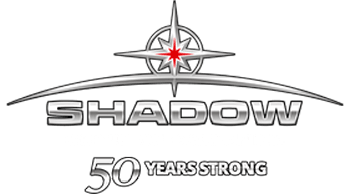Transporting pressurized chemical tanks demands meticulous planning and strict adherence to safety protocols. Logistics providers must navigate a series of critical steps, including regulatory compliance and the use of specialized equipment, to ensure the safe and efficient transport of these potentially hazardous materials.
This article dives into the key safety and logistical considerations for transporting pressurized chemical tanks, with a focus on regulations, equipment, and best practices.
1. Regulatory Compliance
One of the most important factors in transporting pressurized chemical tanks is strict compliance with regional, national, and international regulations. In Canada, the Transportation of Dangerous Goods (TDG) Regulations outline the necessary protocols for handling and transporting hazardous materials.
On a global scale, the International Maritime Dangerous Goods (IMDG) Code and the European Agreement concerning the International Carriage of Dangerous Goods by Road (ADR) provide additional requirements. These regulations set standards for labelling, packaging, and transporting pressurized tanks to minimize risks.
Non-compliance can lead to severe penalties and compromise public safety. Companies like the Shadow Group, specializing in transport logistics such as pressurized chemical tanks, bulk pneumatic services, and more, ensure full adherence to these regulations, offering customers peace of mind.
2. Specialized Equipment
Pressurized tanks typically contain volatile or hazardous chemicals, making the selection of proper transport equipment critical. Pressurized chemical tanks offer a secure and controlled environment for substances sensitive to pressure and temperature fluctuations.
These trailers are equipped with key features, including:
- Reinforced compartments to prevent leakers or ruptures,
- Pressurization systems that maintain a consistent, safe pressure,
- Temperature control mechanisms to prevent chemical reactions during transport.
These trailers are fitted with emergency venting systems and pressure relief valves to handle any sudden pressure increases.
3. Loading and Unloading Procedures
Proper loading and unloading of pressurized chemical tanks is one of the most important factors in ensuring safe transport. This process demands skilled and experienced operators who are well-versed in pressure management, chemical handling, and recognizing potential hazards.
4. Emergency Response Preparedness
Despite the best planning, accidents can still occur. A robust emergency response plan is necessary when transporting pressurized chemical tanks. This plan should include:
- Real-time monitoring of transport conditions,
- Contingency strategies for route diversions in the event of an accident,
- Equipping transport vehicles with spill kits and fire suppression systems.
5. Route Planning and Timing
Transporting pressurized tanks requires careful route planning to reduce exposure to populated areas and environmental risks. Logistics planners must consider factors such as weather conditions, traffic patterns, and road infrastructure to minimize the risk of accidents and delays.
Certain chemicals may have time-sensitive requirements, demanding precise coordination for timely deliveries. For instance, temperature-sensitive chemicals must reach their destination quickly to prevent degradation.
Key Takeaways
Safely transporting pressurized chemical tanks requires a thorough approach that includes regulatory compliance, specialized equipment, careful loading and unloading procedures, and emergency preparedness.
Working with a logistics provider like Shadow Group, which offers services for transporting pressurized chemical tanks, bulk pneumatic services, line haul transportation, and more, can ensure the safe, efficient, and compliant transport of hazardous materials over long distances.
For more information, contact the Shadow Group today.
